
Eastern Europe in a Wink, Part III
Continuing our 10-day gambol through Eastern Europe, we jumped on a last minute opportunity to fly to Serbia.
Our initial interest in coming to Serbia stemmed from a friendship we formed with Uros Kostic, a native of Belgrade also studying abroad in Aalto University. He was part of the Wood Program a very special design-build studio that designed a contemporary smoke sauna to be located on the property of Alvar Aalto’s experimental summer house in Muuratsalo, Finland. It looked like a fantastic experience and we were envious them.

Scars of Modern Conflict and Diplomacy in the White City
Officially the Republic of Serbia, the country is located at the crossroads of Central and Southeastern Europe, a desirable and strategic location at the top of the Balkan Peninsula. This, coupled with a region struggling to come to terms with each other’s autonomous identities and sovereignties, has cast Serbia into much conflict. It was in this country that the very first Battles of WWI were fought, and it was Serbia that controlled the primary political and military power as Yugoslavia slowly broke apart.
Beograd
Belgrade, the Serbian capital of 1.1 million residents, is one of the largest cities in Southeastern Europe. Its remarkable geographic position at the confluence of the Danube and Sava river as appropriately been coined the “Gateway to the Balkans”.

Overlooking this confluence from atop the great Belgrade Fortress, it is not hard to understand why this location was so desired for the last 2,300 years.
We did not know what to expect or how we would be received in this city that has suffered from a history of recent conflict, even suffering a series of bombings by the United States and NATO in 1999. Our experience however, proved to be one of the most memorable of the trip. The city is wonderfully diverse, having been founded in the 3rd century BC, it has been home to many nationalities and has architectural roots dating back to the Roman Empire. It’s name, Belgrade, translates to “The White City,” originating from the white stones from which the old city was made. While it still bares the eerily recent scars of modern warfare, we found the Serbs to be the most friendly and helpful of the entire tour. Uros got us in contact with his best friend, Dragan Stetin, a recent architecture graduate of the University of Belgrade.
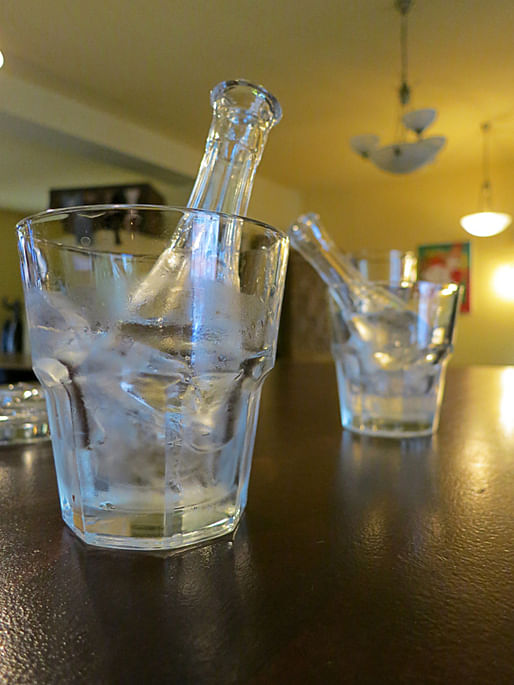
Rakia, a common and popular licor that you sip cold.
He provided us with the kind of hospitality that few will ever receive, and it gave us a truly unique experience to the trip. Our long discussions offered us much insight to the current Serbian state of mind, the aspirations of the youth, the city’s urban development, the lovely food culture, and above all the inspiring struggle to fight against apathy and rebuild what has been knocked down time after time.

Walking in the ramparts of Kalemegdan Park in the Belgrade Fortress
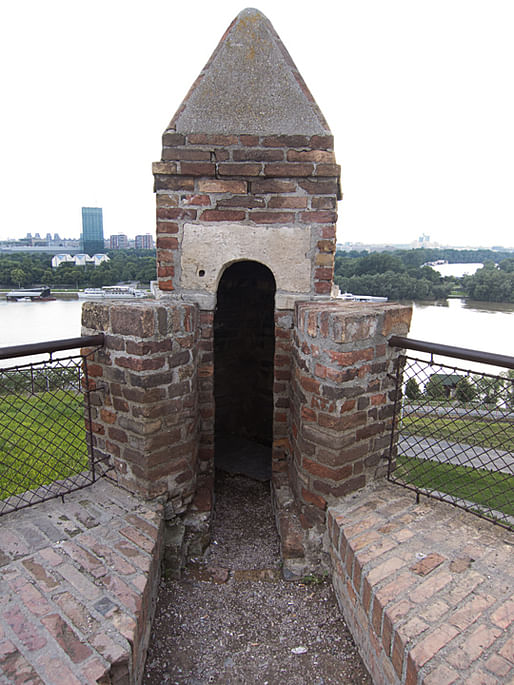 Reclaimed toilet
Reclaimed toilet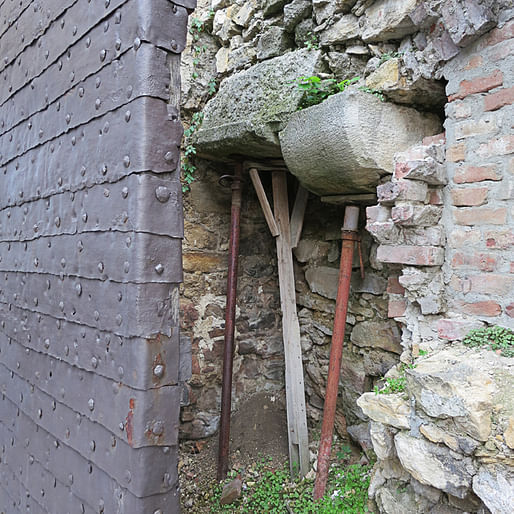
Thousands of years of the construction-destruction cycle.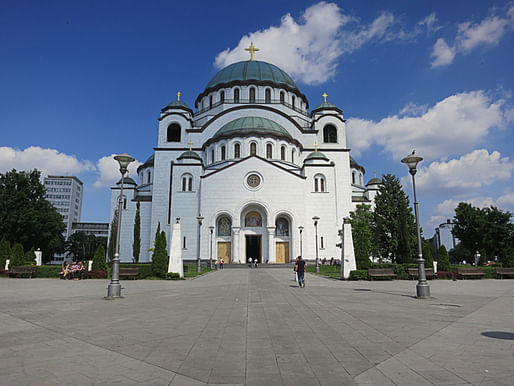 St. Sava Temple. It is still under construction but when finished, it will be the largest orthodox church in the world
St. Sava Temple. It is still under construction but when finished, it will be the largest orthodox church in the world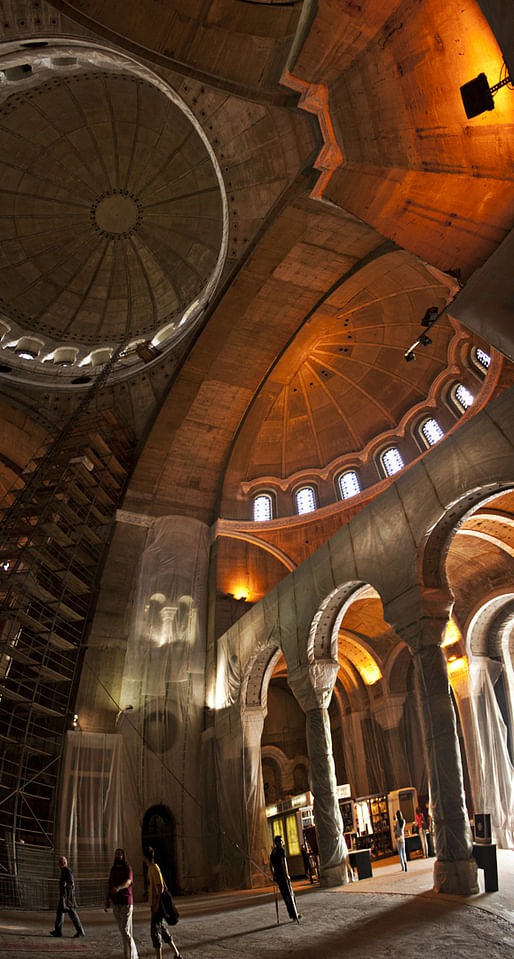
Interior of St. Sava Temple
Interior of St. Sava Temple
Surprisingly enough, the only hostilities we felt were at the U.S. Embassy in Belgrade. Walking past, we noticed that every window of the white Neo-Classical façade had been filled in with brick. Instinctively reacting with our cameras at this curiosity, and having just finished a studio in Helsinki that dealt with the Architecture of foreign diplomacy, we brought our cameras to our face. Within an instant there were people running out the door and shouting at us. They deleted all photos of the embassy, temporarily confiscated our passports, and proceeded to quiz us on the dates of our visas and where we were staying, and we endured a series of questioning as to what we were doing in Serbia, and why we were in Europe in general. The entire ordeal lasted about twenty minutes.
Off-putting as it was, we suppose that this paranoia is the new unpleasant reality of modern security, and after further digging into the subject, it can be argued that it is justified. Just a few years ago the very same embassy suffered attacks from demonstrators frustrated with US policy toward Kosovo.
Still, the effort to prevent photography from the outside seems somewhat futile, as even the guards admitted to us the often tour buses will drive by and they see people photographing the building and they cannot do anything about it. We are architecture students, and we were trying to document architecture and the implications that come with it. At the very least we are grateful they did not wipe our memory cards. While we do not have a photo of the bricked façade to show on the blog, you can see a partial image of it here.
Indeed, around many corners, we encountered scars from the 1999 U.S. bombing in Belgrade. To see these facades with gaping holes and crumbling floors on prominent streets was a shocking sight, and frightening to imagine just how recent this was.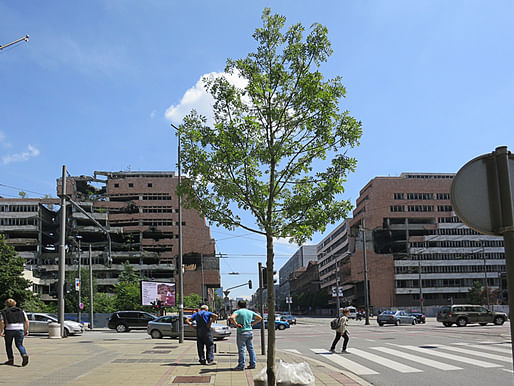 Many of the bombed buildings still sit in prominent urban positions, where they have become landmarks within the city
Many of the bombed buildings still sit in prominent urban positions, where they have become landmarks within the city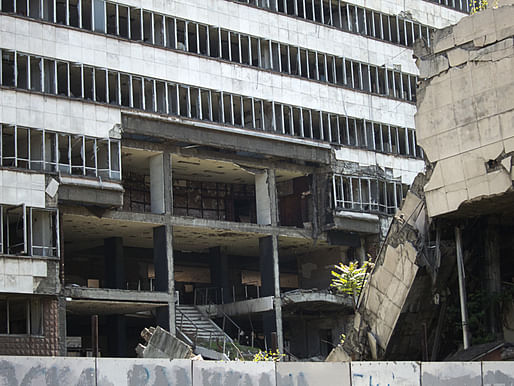
The bombings targeted offices and areas of high military importance of the Yugoslavian Government
 This building was once the site of Serbia's primary telecommunications center. They have since added a new addition to the building but have kept the bombed portion.
This building was once the site of Serbia's primary telecommunications center. They have since added a new addition to the building but have kept the bombed portion. 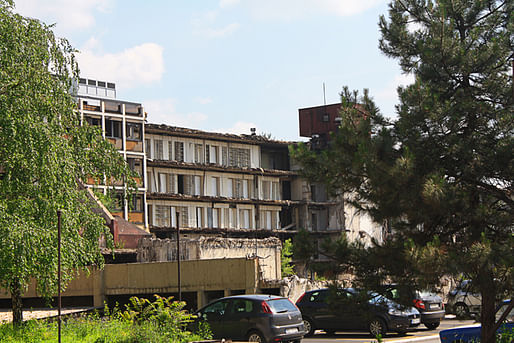 Scars of war
Scars of war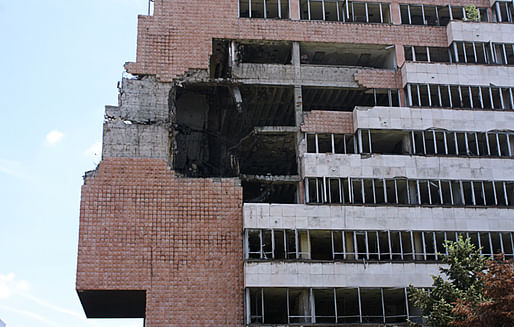

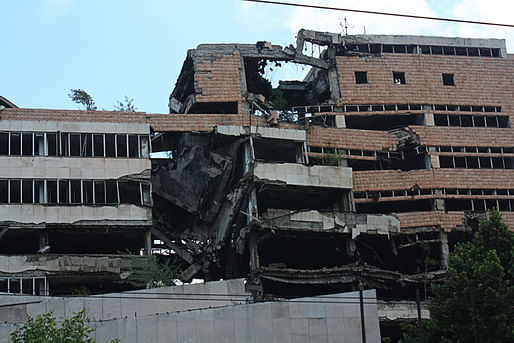
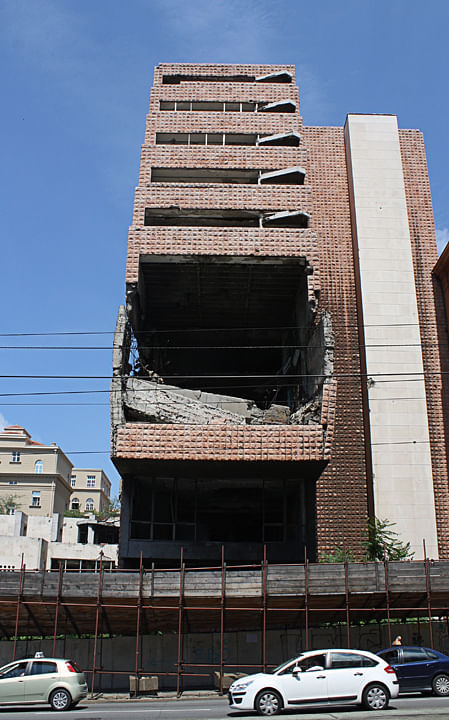

Damage from debris
In terms of overall urbanism, the city was a pleasure to walk. Sweeping Beaux Arts promenades gave way to tight winding allies. On every block was a mix of old and new, classical and communist, crumbling and renovated. The topography was hilly and in the heat was a dustiness that gave a strong sense of time and antiquity. Curious plazas and hidden courtyards were in abundance, and certain neighborhoods bustling with a thriving culture of the Kafana, a distinct type of local bistro that primarily serves sophisticated alcoholic beverages and light food. Accompanied with street music, this is part of Turkish culture that has permeated into the Balkans.
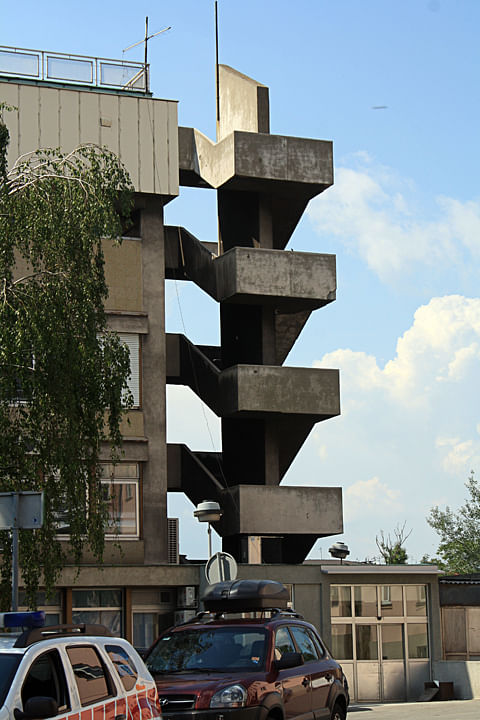
Brutalist curiousities
Strange super structure
A dusty stew of old and new.  The grit added a character to everything.
The grit added a character to everything.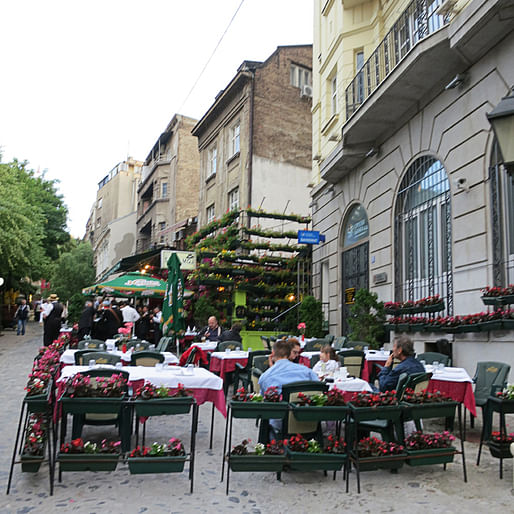
Typical outdoor scene at a Kafana
Strangely severe classical facades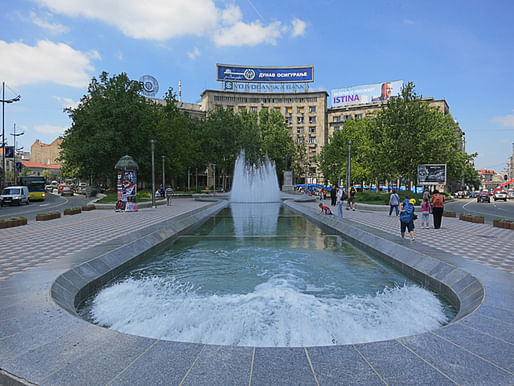
A plaza in Belgrade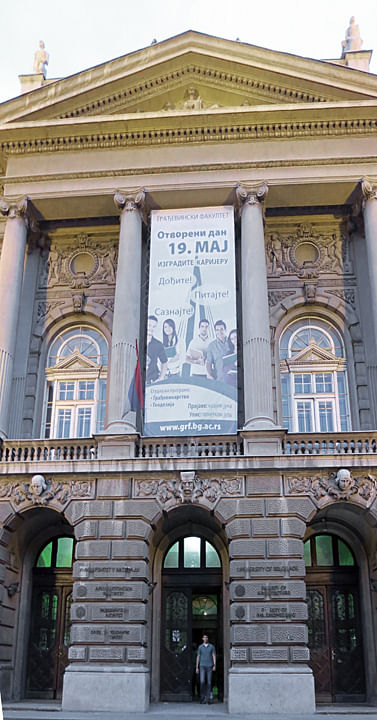
The architecture school at the University of Belgrade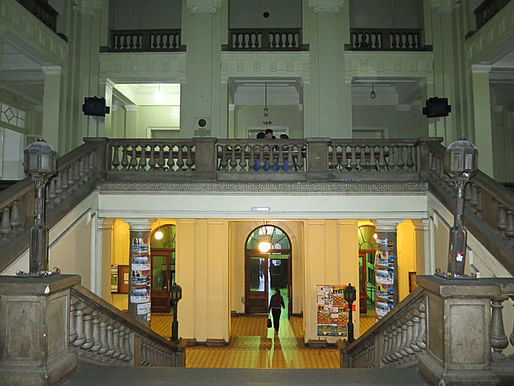
Dragan told us that as a component of entrance exams to qualify for the architecture school, they had to sit in this room and sketch details over the course of a few hours. 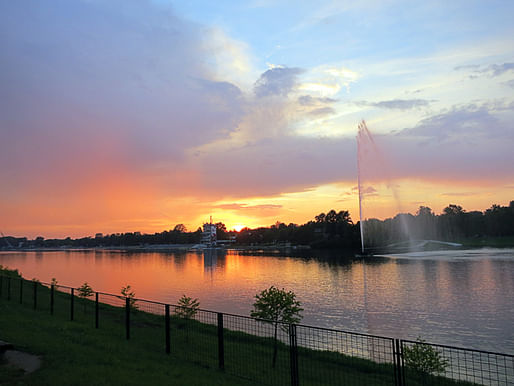 Belgrade sunset through the lens of Jennifer Wong
Belgrade sunset through the lens of Jennifer Wong
 Belgrade sunset through the lens of Alexander Morley
Belgrade sunset through the lens of Alexander Morley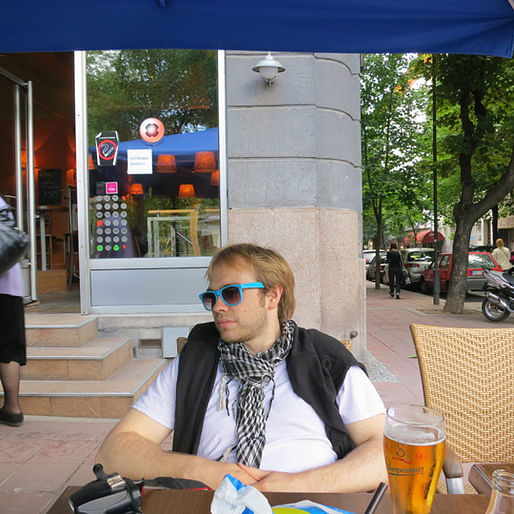
Sad to leave, we hopped onto an overnight bus to Croatia by way of Bosnia. The landscape and views from this ride were some of the most beautiful we have ever seen. The photos from the bumpy bus will not begin to do it justice. In the morning we spent a few hours in the Bosnian city of Mostar, and again we encountered friendliness beyond anything we expected. This beautiful city is nestled into a hillsidealong a river, penetrating from the low rise datum is a series of church towers and minaretes. Mostar too, bears the scary reminders of war. Many buildings bored the peppered holes from bullets. 
Bosnian country home
Lush mountains with deep misty ravines. The photos do not capture the scale.
Tight turns up and down winding switchbacks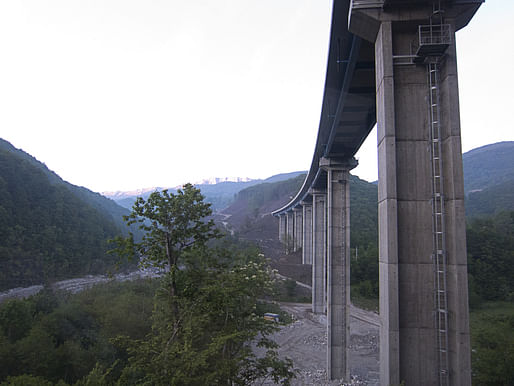
There were moments of severe exposure
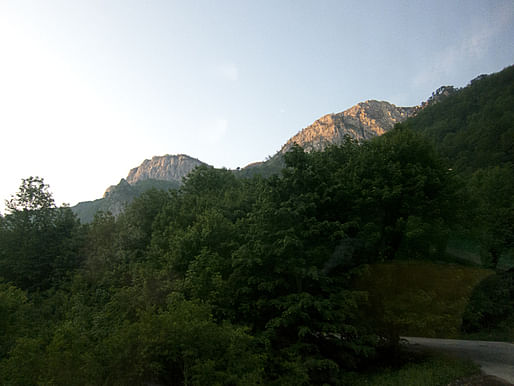
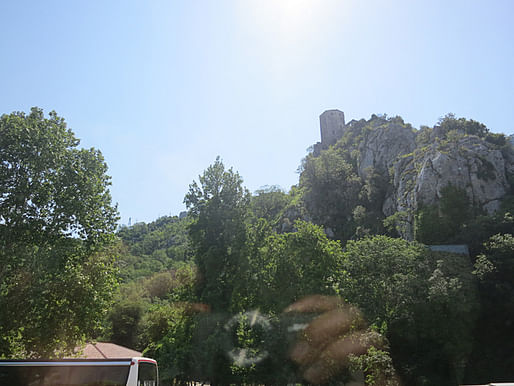 In southern Bosnia the landscape starts to take a less lush character and adopts a rockier more windswept quality as we get closer and closer to the Adriatic Sea.
In southern Bosnia the landscape starts to take a less lush character and adopts a rockier more windswept quality as we get closer and closer to the Adriatic Sea.  City of Mostar with minaretes, castles, and extremely friendly people
City of Mostar with minaretes, castles, and extremely friendly people 
Mostar Leaving Mostar
Leaving Mostar
As we descend further down the beautiful Bosnian mountains into the Dalmatian Coast of Croatia, we will encounter more wounds and ill feelings resulting from the Croatian War of Independence in the 1990’s. We take with us gratefully what we learned in talking to Dragan, that war only results when diplomacy fails, and usually it has nothing to with the people as a whole. Dragan’s entire life was temporarily altered as a boy when his city was bombed for over 30 days. At that time both of us were unaware and unconcerned that anything was happening. To go to such a places today was humbling, and to be spending time joyously, happily laughing, all of these past conflicts seemed just as distant as WWII. It was merely the physical scars in the buildings that still stood exposed, almost intentionally, as a blunt reminder not of resentment, but of the horrors that war brings.
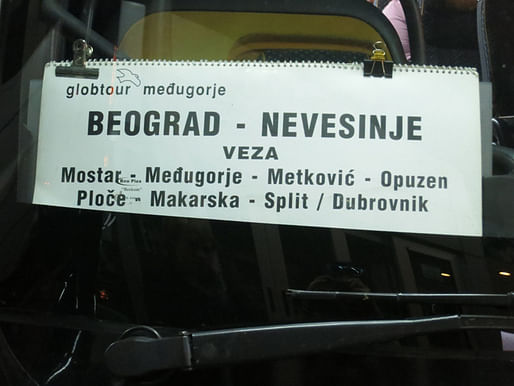 This was one of the most uncomfortable bus rides we have ever taken, but also one of the most beautiful. 14 hours of no leg room.
This was one of the most uncomfortable bus rides we have ever taken, but also one of the most beautiful. 14 hours of no leg room.
Next stop, Croatia.

This work by A.D.Morley & J.A.Wong is licensed under a Creative Commons Attribution-NonCommercial-NoDerivs 3.0 Unported License.
A new adventure begins as we finish one chapter; we hope to share our story with you. We are graduates of Washington University in St. Louis, Sam Fox School of Design & Visual Arts.
3 Comments
Bruce Sterling has a long running association with Beograde as documented here.
Wait, so you didn't go to the old town and see the rebuilt Ottoman bridge?
Are you talking about the rebuilt Ottoman bridge, in Mostar, Bosnia? Then yes we did.
Block this user
Are you sure you want to block this user and hide all related comments throughout the site?
Archinect
This is your first comment on Archinect. Your comment will be visible once approved.